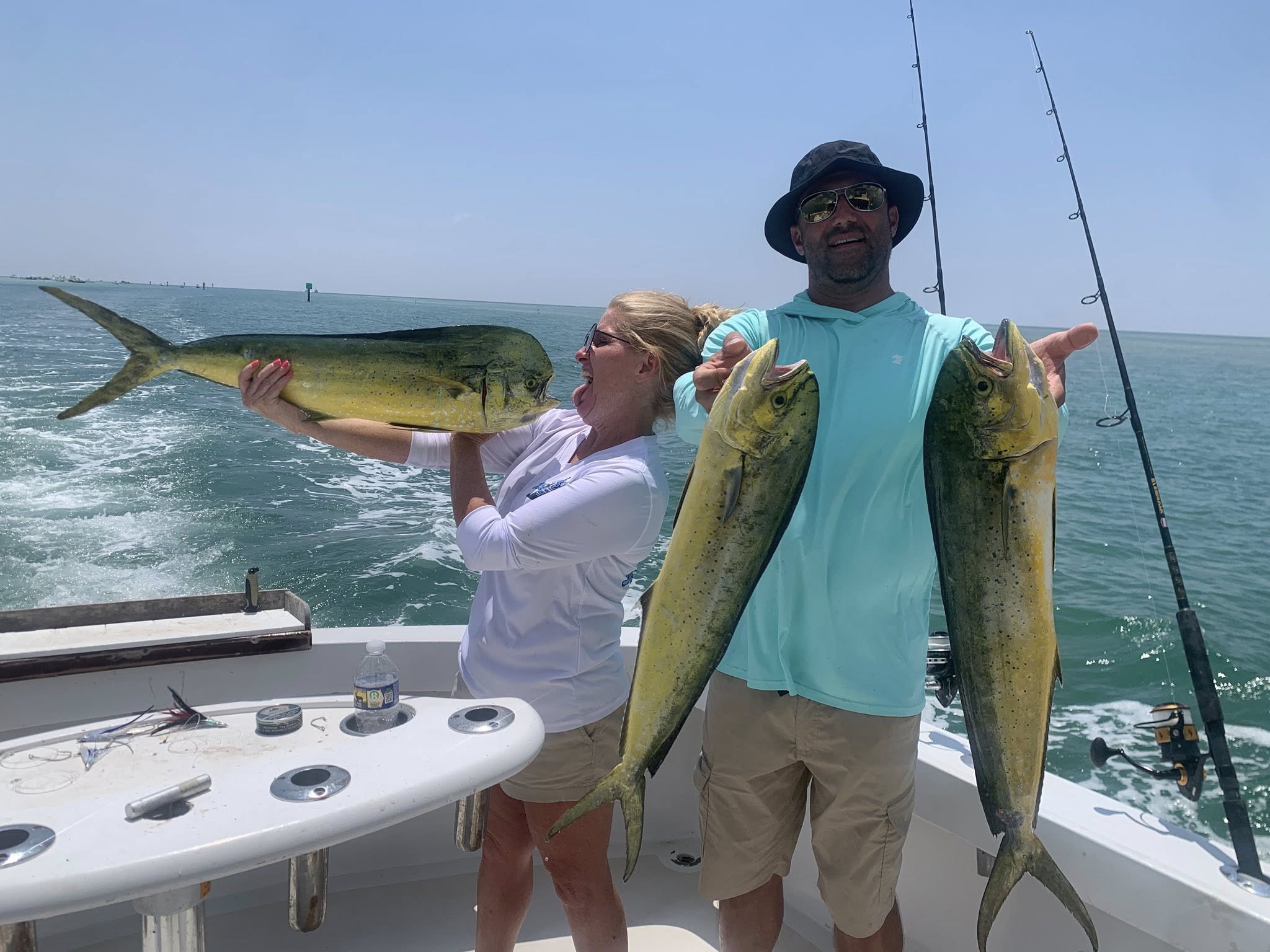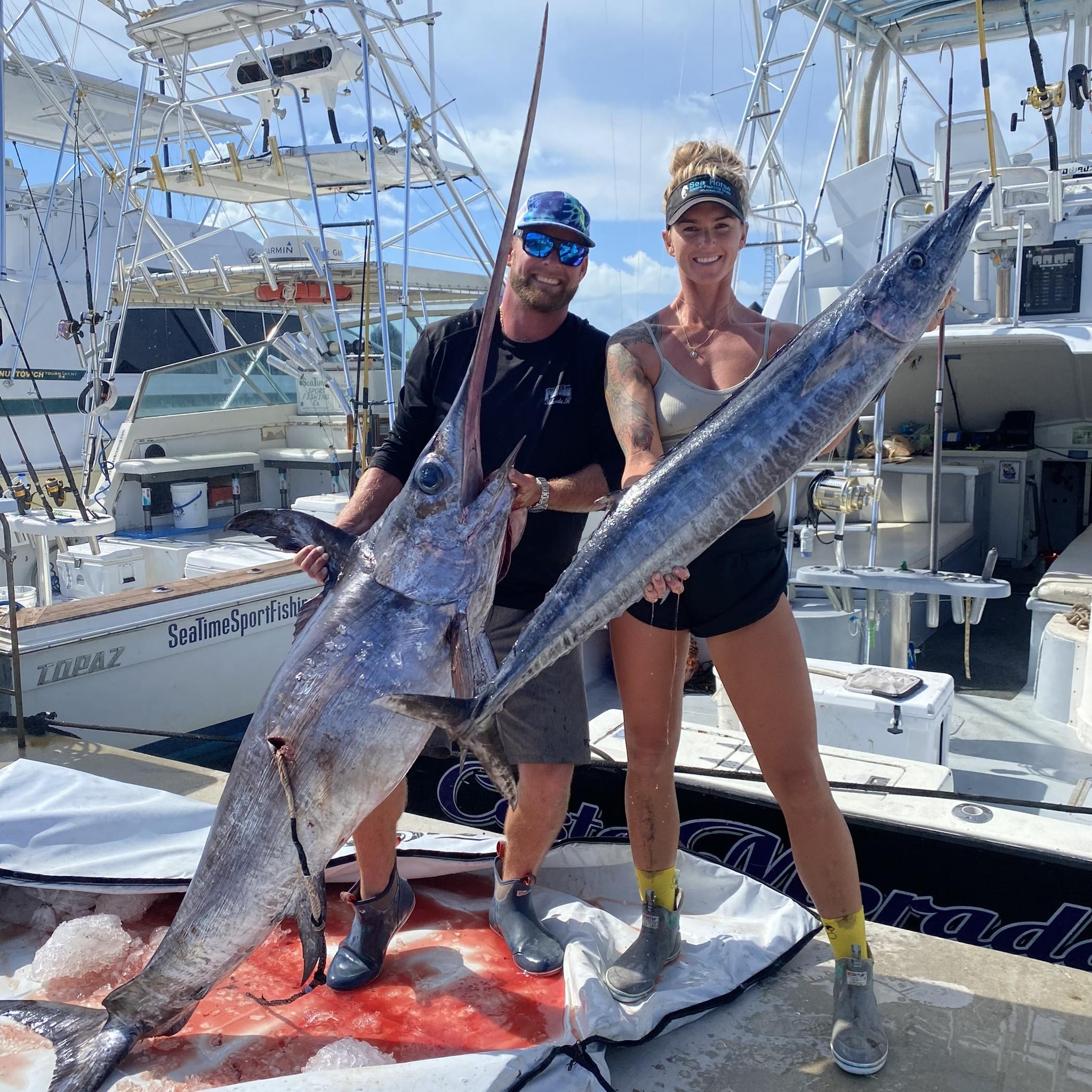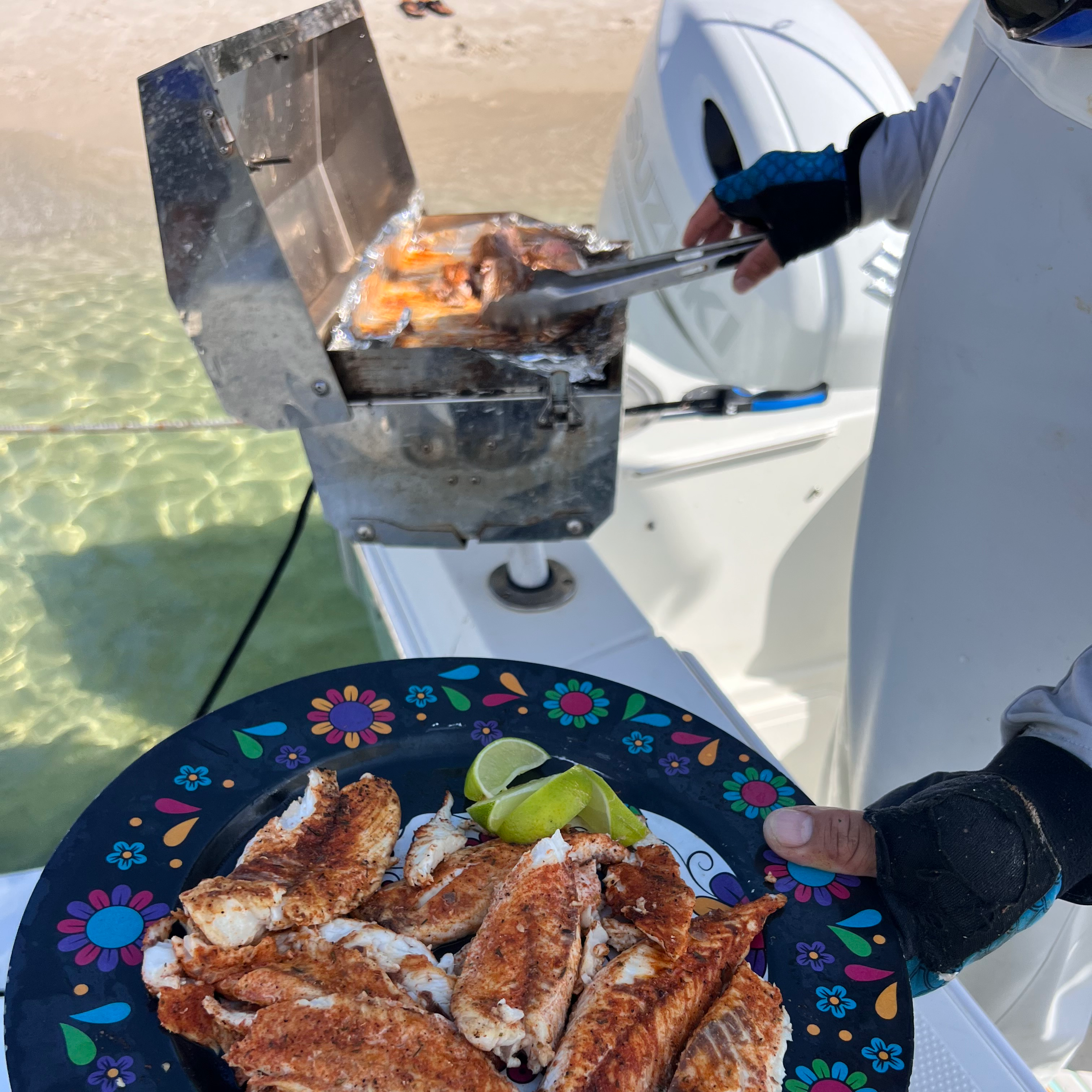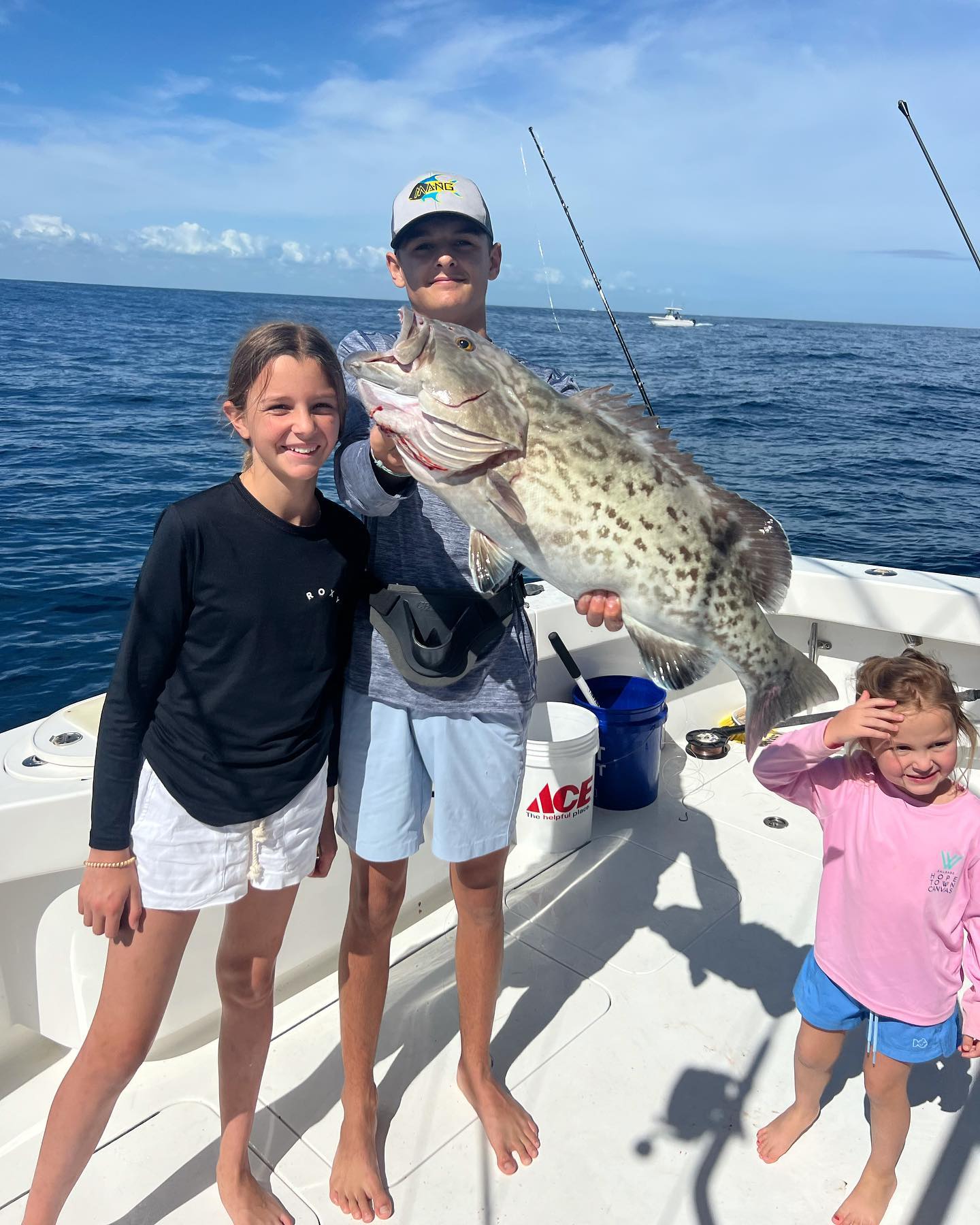Deep Sea Fishing in Islamorada
8 Hour Full Day
Deep Sea, Nearshore Fishing in Hatteras
Bill Fishing Hatteras
Deep Sea, Nearshore, Jetty in Miami
Miami Sport Fishing 🎣
Deep Sea, Nearshore, Jetty in Miami
Catch And Cook Sashimi/Grilled Fish
Deep Sea, Nearshore Fishing in Fort Pierce
Full Service Offshore Fishing Trip
Deep Sea, Nearshore, Jetty in Miami
Miami Sport Fishing 🎣
Deep Sea Fishing in Morehead City
Full Day Gulf Stream
Deep Sea Fishing in Pompano Beach
Chasing Mahi, Tuna, Sails, & More!
Deep Sea Fishing in Islamorada
Keys Offshore Fishing Adventure
12 Hour Trip – Offshore Trip
We started Captain Experiences to make it easy to book fishing and hunting guides around the world. With over 2,000 Damn Good Guides, our platform makes finding and booking a trip seamless. Head here to check out our trips.
What is a Tilefish?
Tilefish are quirky fish that live in extremely deep waters and require specialized fishing gear just to reach them. Species of tilefish can be found in both the Atlantic and Pacific oceans, where they are commonly sought after as table fare. These fish have a distinct, slender body with a rounded head and can grow to over four feet long and weigh up to 50 pounds.
In the Atlantic, the most popular species targeted by recreational anglers are blueline, golden, and the great northern tilefish. While blueline and northern tilefish are usually a dull olive or gray color, their iridescent fins, yellow spots, and sometimes blue or pink head are beautiful yet subtle. The golden tilefish have many of the same characteristics but their colors and patterns are vivid and more flashy.

Where do Tilefish Live?
Tilefish live in 200 to 1,500 feet of water near structures like reefs, wrecks, and ledges. They feed on shrimp and crabs along the bottom where they also tend to make their burrows. Tilefish dig holes in the seafloor that they use for cover, and with more social tilefish species, burrows can be grouped close together like a prairie dog town. While most fish that live in cover face out, waiting to ambush prey or flee from potential threats, tilefish tend to hang out in their burrows with their head facing in.
How to Catch Tilefish
Bottom fishing is a popular way to target deep dwelling fish like red snapper, but most of those setups would barely touch the bottom where tilefish live. Deep dropping is bottom fishing on steroids, using reels with 1,000 yards or more of line on the spool. The weights used in deep dropping are measured in pounds instead of ounces in order to get bait down to the seafloor without being carried away by the current.

The most effective approach to targeting tilefish is using deep drop gear with a heavy weight to drop bait down to structure in 300 to 1,000 feet of water. For bait, natural food sources like squid, crabs, and herring are great options, but cut bait made from strips of fish is also a popular choice. When you hook up to a tilefish, be prepared for a fight that’s challenging in a new way. While tilefish typically weigh around 20 pounds and put up a good fight, trying to reel up a fighting fish from 1,000 feet with an extra five pound weight swinging around is exhausting.
Book A Deep Dropping Tilefish Trip
Deep dropping is a fishing experience unlike any other, offering new challenges and a delicious reward. If you want to see what tilefish and deep dropping are all about, check out our tilefish fishing charters and get ready for a great trip.
Joey Butrus
Updated on June 22, 2023

March 8, 2022

July 1, 2024

August 21, 2023

April 15, 2022

June 22, 2022
Related Articles
July 17, 2022
December 1, 2021
May 2, 2022
Featured Locations
- Fishing Charters Near Me
- Austin Fishing Guides
- Biloxi Fishing Charters
- Bradenton Fishing Charters
- Cabo San Lucas Fishing Charters
- Cancun Fishing Charters
- Cape Coral Fishing Charters
- Charleston Fishing Charters
- Clearwater Fishing Charters
- Corpus Christi Fishing Charters
- Crystal River Fishing Charters
- Dauphin Island Fishing Charters
- Daytona Beach Fishing Charters
- Destin Fishing Charters
- Fort Lauderdale Fishing Charters
- Fort Myers Fishing Charters
- Fort Walton Beach Fishing Charters
- Galveston Fishing Charters
- Gulf Shores Fishing Charters
- Hatteras Fishing Charters
- Hilton Head Fishing Charters
- Islamorada Fishing Charters
- Jacksonville Fishing Charters
- Jupiter Fishing Charters
- Key Largo Fishing Charters
- Key West Fishing Charters
- Kona Fishing Charters
- Lakeside Marblehead Fishing Charters
- Marathon Fishing Charters
- Marco Island Fishing Charters
- Miami Fishing Charters
- Montauk Fishing Charters
- Morehead City Fishing Charters
- Naples Fishing Charters
- New Orleans Fishing Charters
- New Smyrna Beach Fishing Charters
- Ocean City Fishing Charters
- Orange Beach Fishing Charters
- Panama City Beach Fishing Charters
- Pensacola Fishing Charters
- Pompano Beach Fishing Charters
- Port Aransas Fishing Charters
- Port Orange Fishing Charters
- Rockport Fishing Charters
- San Diego Fishing Charters
- San Juan Fishing Charters
- Sarasota Fishing Charters
- South Padre Island Fishing Charters
- St. Augustine Fishing Charters
- St. Petersburg Fishing Charters
- Tampa Fishing Charters
- Tarpon Springs Fishing Charters
- Venice Fishing Charters
- Virginia Beach Fishing Charters
- West Palm Beach Fishing Charters
- Wilmington Fishing Charters
- Wrightsville Beach Fishing Charters
































